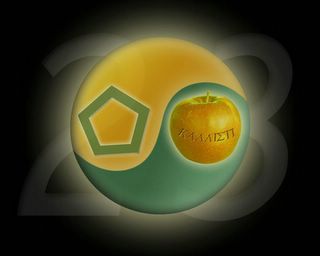Holographic Universe

Last week, I discussed a film that I like very much but that doesn't necessarily coincide entirely with my own view of things, so this week I'll be discussing a topic that I find rather agreeable as a potential model for reality: holographic universe.
The link in the title will take you to Amazon's purchase page for Michael Talbot's book, The Holographic Universe. No, I'm not shilling for a dead guy's book but this is a very well written and compelling read. You can find a good synopsis (at no charge) here. Based largely on the collected works of David Bohm and Karl Pribram, Talbot's holographic model suggests that "solid" reality seems to operate very much like a hologram.
As I already stated, I find this particular model to be rather agreeable for a number of reasons. For one, a holographic model would do much towards explaining how the brain functions; possibly even more than existing theories. The book provides nearly an entire chapter to discussing this alone and makes a very interesting comparison between brain function and the way holographic film operates. To quote from the synopsis linked above:
To make a hologram, the object to be photographed is first bathed in the light of a laser beam. Then a second laser beam is bounced off the reflected light of the first and the resulting interference pattern (the area where the two laser beams commingle) is captured on film.
When the film is developed, it looks like a meaningless swirl of light and dark lines. But as soon as the developed film is illuminated by another laser beam, a three-dimensional image of the original object appears.
The three-dimensionality of such images is not the only remarkable characteristic of holograms. If a hologram of a rose is cut in half and then illuminated by a laser, each half will still be found to contain the entire image of the rose.
Indeed, even if the halves are divided again, each snippet of film will always be found to contain a smaller but intact version of the original image. Unlike normal photographs, every part of a hologram contains all the information possessed by the whole.
Much in the same way that the entirety of a holographic image is contained in the various parts of the film, the brain does seem to operate in similar fashion. For instance, a patient suffering some sort of trauma causing damage to a portion of the brain or even having to have a small section removed does not lose access to a corresponding chunk of memories being stored in the damaged area. Recall may become slower, but it still occurs and memories do not seem to be completely lost indicating that such information isn't stored in a specific location in the brain:
Then in the 1960s Pribram encountered the concept of holography and realized he had found the explanation brain scientists had been looking for. Pribram believes memories are encoded not in neurons, or small groupings of neurons, but in patterns of nerve impulses that crisscross the entire brain in the same way that patterns of laser light interference crisscross the entire area of a piece of film containing a holographic image. In other words, Pribram believes the brain is itself a hologram.
Pribram's theory also explains how the human brain can store so many memories in so little space. It has been estimated that the human brain has the capacity to memorize something on the order of 10 billion bits of information during the average human lifetime (or roughly the same amount of information contained in five sets of the Encyclopaedia Britannica).
Another reason I am inclined toward a holographic model of reality has to do with anomalous and unexplained phenomena. Science typically seems to turn a blind eye to such phenomena even when hoaxes and charlatanism are ruled out as most models and theories simply have no way to even begin incorporating the phenomena. A holographic model, on the other hand, provides adequate explanation for, and does not have a conflict with, such phenomena.
Ultimately, I suppose I find myself gravitating closest to this holographic notion due to its all inclusive nature as well as the intuitive ring of truth I feel whenever I contemplate its potential. Certainly, as Shakespeare said, there's a hell of a lot more crap going on than any of us can even begin to imagine. :)



